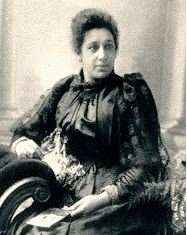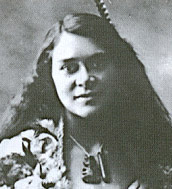her health, career, and family life was collapsing all about her.
|
E tangi ana koe Hine e hine E ngenge ana koe Hine e hine . Kati tö pouri rä Noho i te aroha Te ngäkau o te Matua Hine e hine. |
You are weeping Little girl, darling girl you are weary Little girl, darling girl Be sad no longer There is love for you in the heart of the Father Little girl, darling girl |
Some people sing mou te aroha instead of Noho i te aroha. |
|

Old sheet music verse
The above E tangi ana koe verse is the only one Toby Rikihana gives in Waiata Maori, and Kiri Te Kanawa repeats this verse three times on her CD Kiri sings Maori, leading me to think it was the only verse still used.But there are more verses about. I found this old piece of sheet music at the National Library. It has the words Kiri sings as verse one. Then it has another verse. I don't know if people still sing it. And I don't know if Princess Te Rangi Pai wrote the English.
|
By the Princess Te Rangi Pai |
|
| Plaintive all through the night - Hine, E Hine! Weeping till morning light - Hine, E Hine! From my care why try to leap There is love for you Mother's arms their strength will keep Hine, E Hine! |
E tangi ana Koe Hine, E Hine! Kua ngenge ana koe Hine, E Hine! Kati to pouri ra Noho i te Aroha Te ngakau o te Matua Hine, E Hine! |
| See where there comes the morn Hine, E Hine! Long rays of early dawn Hine, E Hine! Shining to Reinga far Where thy noble grandsires are Nestle Aroha! Hine, E Hine! |
E Hari to moe moea Hine, E Hine! Marama ahua Hine, E Hine! I roto i to moenga Mehemea he Marama Ka tae mai te Reinga Hine, E Hine! |
|
Hine,
E Hine! Maori for "little one" Te Reinga, the spirit land Aroha, Darling |
|
The capital letters and footnotes are as on the music sheet.
Notice the English and Maori lines do not match each other in meaning.
Maori Chorale verse
And I have found the NZ Maori Chorale and the Saint Joseph's Maori Girls' Choir singing another completely different verse on the 1995 compilation CD, New Zealand; our land, our people.Here is a sound clip of them singing that verse.
Archived papers
Princess Te Rangi Pai's papers are archived at the University of Auckland Library. ( NRAM archive A83)6
Someone may like to visit the archives there sometime and see which of these verses, Maori or English are in her papers, or if there are any more verses she wrote. JA

 In
the Turnbull Library, Wellington, NZ. [Music Box
TER Mao 1911 (262596)]
In
the Turnbull Library, Wellington, NZ. [Music Box
TER Mao 1911 (262596)]
